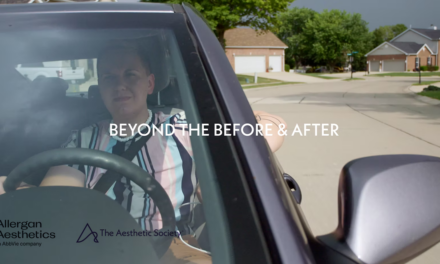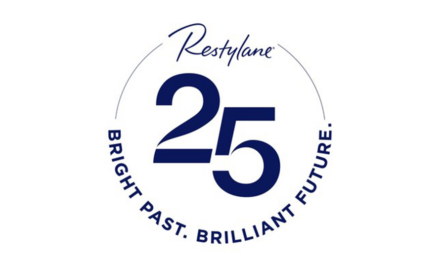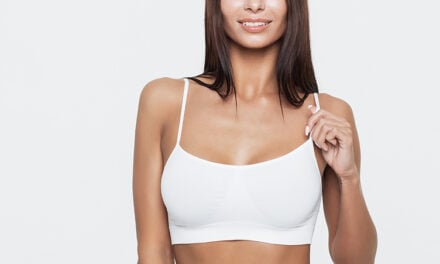Wendy Lewis talked to some leading experts about this emerging category of skin care
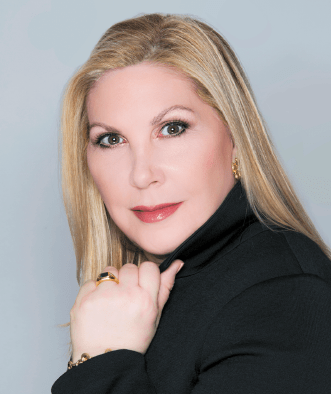
contact [email protected]
Sustainable solutions in the beauty and cosmetics market worldwide were gaining traction long before COVID-19, but the pandemic appears to have accelerated consumer demand for formulations that are better for users and for the planet. Dovetailing with that is the ongoing evolution of wellness, self-care and a holistic approach to beauty; consumers tend to pay very close attention to what is in their products as well as what is not in them.
Beauty brands, medspas and aesthetic clinics that are successful in engaging with this expanding customer base will have a leg up on the competition. They are building goodwill, recognition, and loyalty among their audience. However, the ‘clean beauty’ label that started out more like a marketing term has morphed into a topic that is taking up a lot of airtime in the skincare conversation.
So, why should aesthetic practitioners and skincare professionals care about what is being touted in beauty circles? Because your patients and clients care a lot, which makes it very important to stay on top of the trends that will ultimately trickle down into your businesses too. The connection between basic beauty and medical aesthetics has never been more symbiotic.
The eco-conscious consumer
According to Klarna’s insights from their 2021 State of Smooth Report, ‘For younger generations, the biggest consideration when shopping for beauty products was natural, non-toxic ingredients. Gen Z and millennials were also more inclined to buy cruelty-free and vegan products than their older counterparts.’ Indeed, this age group is not only concerned with products that are safe for them, but also want to use products that don’t harm the environment, are safe for the planet, sustainable, and produced ethically.
This megatrend is not exclusive to skincare users under 30 anymore. Beauty products positioned as clean and sustainable are not exactly new, but this category marks a wide growth opportunity for established brands and indie brands from skincare, sun care, and haircare. Most recently, colour makeup brands have taken their place in the clean beauty category with early acceptance from consumers. To date, Sephora’s US site boasts 313 ‘clean makeup’ products from a wide range of top brands, including Milk Makeup, Ilia, Bare Minerals, Tarte, and Bite Beauty. In fact, research from Mintel reveals that 64% of US beauty consumers would like to see more innovative sustainability ideas from beauty brands, and transparent sustainability ranks high among consumers, too.

According to Karen Ballou, Founder/CEO of Immunocologie Skincare, ‘If we take a step back and ask what “Clean Beauty” means, you will often get many different answers because no one has really defined it clearly to date. What it is supposed to signify is that a beauty brand is using the highest quality and integrity of natural ingredients without synthetic or chemically driven ingredients. Recently, there has been a change in the industry and a revelation among consumers that skin is the largest organ of the body, so what you put on it must be absorbed into the body. The term “clean beauty” started out as a marketing tactic and was not really defined, so many brands have jumped on this trend. As a brand owner and formulator, I believe that what should stand out is your integrity to do the research by the highest standards so your claims are real and you can substantiate them. This is my acronym for “CLEAN”: C–Clean, L–Living, E–Environmentally safe, A– and N–Natural.’
Clean beauty meets the professional market
These heightened demands can attract the preferences of very informed and ecologically-focused customers who are making their way into plastic surgeon’s offices, aesthetics clinics and medspas. In 2021, more professional brands are heavily invested in this category to capture their share of this emerging market that dovetails with the newest crop of aesthetic patients looking for dermal fillers, neuromodulators, energy-based technologies, and skincare services.
According to Patricia Boland, Vice President of Research and Development for Colorescience®, ‘The demand for clean beauty products is a rising trend. Unlike OTC sun care and cosmetics, there is no governing body like the FDA that has defined “clean beauty” across the board. We have always made sure that our ingredients are 100% free from parabens, phthalates, synthetic fragrance and dyes, talc, mineral oils drying alcohols and chemical sunscreens. We do not test on animals, require that our raw material suppliers provide tested safety and efficacy protocols, and we then test our final formulations and perform comprehensive sensitivity, stability and comedogenicity testing in addition to required FDA testing to be sure our products have the highest level of safety and performance. We also believe that ingredient transparency is important, and we disclose all formula ingredients so our consumers can make an informed decision about what they use on their skin.’
David Mays, PharmD, Chief Science Advisor for SkinSAFE® (skinsafeproducts.com), explains that fragrance allergens and essential oils are a big issue for the users on this consumer and physician-facing website. ‘From our perspective, many of the skincare and beauty products claiming to be “clean” contain ingredients that will certainly clean your face and body but are far from being best for those with sensitive skin. There is so much inconsistency from retailer to retailer and this is multiplied by brands who often define and follow their own set of rules.’
He continues, ‘For example, one beauty retailer claims that to be “clean,” products cannot contain petrochemicals like mineral oil, but they can contain essential oils and botanical extracts. A recent study of cleansers claiming to be natural and petrochemical-free actually found that 100% of them actually did contain petrochemicals, despite claims of being clean. You can see how this can confuse consumers since few ingredients are as innocuous to the skin as good old petrolatum and mineral oil or have such a long history of safety and skin benefits. The SkinSAFE site, developed with the MAYO Clinic, uses over 20 years of skin patch data for consumers as well as practitioners. Our philosophy is that products best for sensitive skin must first and foremost be free of the most common allergens and their related compounds. In fact, SkinSAFE research has shown when you avoid the top allergens you can help avoid skin reactions in 49% of people with sensitive skin.’
The certification process
Although many brands are categorising their products as ‘clean beauty’ to capitalise on this global megatrend, a lot of them are taking a shortcut by merely jumping on it for the timely marketing value.
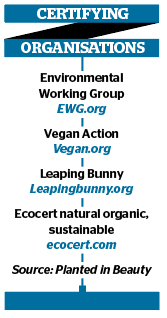
According to Lynne Florio, Co-Founder of the indie brand, Planted in Beauty™, based in New York City, ‘From the beginning, we made a commitment to never trade quality or the peace of mind of our customer for time or money saved. To that end, our ethos of transparency guided us through the voluntary processes taken, going above and beyond what is required to provide assurances and complete transparency to our customer. This is especially important because of the wide range of standards and unclear messaging within the beauty industry.’ In fact, cosmetic companies can easily exaggerate their claims as they are not required to obtain official certification, but that may be changing soon.
She continues, ‘Independent certification requires an unbiased third party to assure you as the consumer, that the product is in fact what the brand tells you it is and has been reviewed at length by leading industry experts. When you purchase our Well Within products, you are given guarantees from our notable third-party certifications that attest to natural, organic, cruelty-free, safe and eco-responsibility practices. There is no single certification that covers all categories, so we applied for four different unbiased certifications. The average consumer assumes that if a product has made it to the shelves of their local drug store, it has undergone extensive testing, which may or may not be the case.’
Certification for organic, natural or clean beauty products is a minefield and, as you can imagine, varies considerably by market. This accounts for why consumer confusion abounds; there is no worldwide standard to shop for and brands have a wide marker for how to approach this claim. To put it in perspective, in the US there are only 11 banned ingredients in skincare products, yet in the EU, there are over 1,300 ingredients that are banned, according to Ms. Florio. This meaningful discrepancy leaves one wondering if the US FDA is not paying enough attention.
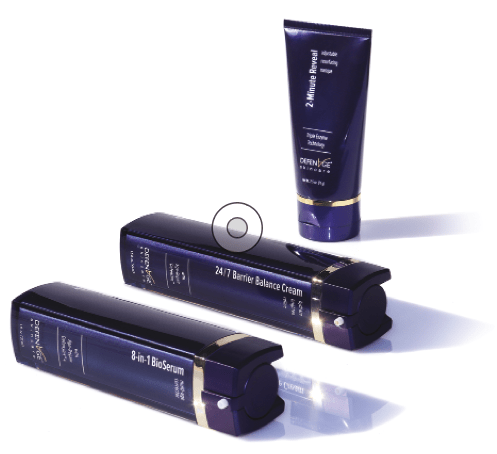
DefenAge Skincare product range
According to plastic surgeon Nikolaos Metaxotos, MD, PhD, founder of the newly launched Dr.Age skincare brand, ‘We have been seeing many more brands eager to adopt the “clean” claim for their products because it is trending among a wide range of beauty buyers. To truly be considered clean takes much more than just stamping the words on the label or omitting a few ingredients. Clean formulations are much more complex starting from sourcing the right ingredients that are clean yet still effective, to production and manufacturing standards. More conscious consumers are demanding clean ingredients in their products and are keen to exclude certain chemicals and potential irritants.’
As a plastic surgeon, Dr. Metaxotos set out to create a brand that was safe, effective, and patient-centred. ‘While working on the formulas of Dr. Age, the idea was not to simply avoid “bad” ingredients. Our primary objective was efficacy and performance. Once we set our standards of performance, our challenge was to achieve these results with clean ingredients. Our formulation process was all about adding good things, rather than just eliminating the bad ones,’ he says.
The new skincare consultation
As expected, many practitioners are finding that their patients’ interest in the clean beauty trend is finding its way into the skin care consultation process.
According to San Antonio dermatologist Vivian Bucay, MD, ‘As a firm believer in skin care as a foundation for skin wellness, it’s very important to keep up with what my patients are reading about, and clean beauty is definitely a topic that comes up more and more frequently. First, find out what the patient means when referring to clean brands; is it clean, green, plant-based, natural, organic, sustainable, cruelty-free or something else. It’s helpful to know what is motivating the patient to ask about clean beauty options.’
She continues, ‘Clean beauty is part of the overall wellness movement, which is big business. The claims have little to do with what the product does for the skin, but mostly about what is not in the product or “made without” claims. There are thousands of compounds that some groups consider harmful, such as carcinogenic, toxic, hormone disrupter, etc., but it usually comes down to what is referred to as the “the dirty dozen,” the 12 ingredients that appear on the majority of lists of compounds to avoid.’
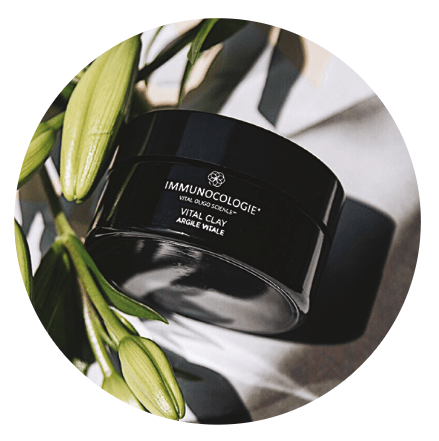
Immunocologie Vital Clay
‘While there are a few compounds on the list we prefer to avoid, such as formaldehyde, there are several, like parabens, that are hotly debated. Oxybenzone is still found in many sunscreens, which are considered over the counter drugs and are regulated by the US FDA yet has not been banned to date. Cyclopentasiloxane is a silicone used for its emollient properties that is found in many skin and hair care products. Although some claim that it can disrupt hormones, studies have shown that not enough can be absorbed through the skin to cause hormone disruption,’ said Dr. Bucay.
It is important to clear up any misconceptions and educate patients so they gain a better understanding of how to read product labels. For example, notes Dr. Bucay, any product containing water can become contaminated, and preservatives are crucial to prevent bacterial and fungal contamination. ‘Patients often believe that everything “natural” is better and “synthetic” implies toxicity. I explain that synthetic preservatives were developed to avoid some of the allergies that occur more frequently with “natural” compounds. Toxicity is often related to the dose and not the compound itself, and anything in excess can be harmful or toxic, including water, oxygen, and vitamins. In other words, there can be too much of a good thing,’ she explains.

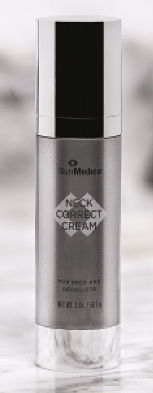
Skinmedica Neck Correct Cream
With so many formulations and ingredients on the market, it is no wonder that consumers are confused about what is safe and effective, and what may be the best choice for their skin. ‘When discussing skin care, science is what guides my recommendations. Product claims need to be truthful and substantiated, and I do my best to respect the patient’s preference to avoid certain compounds. One of the product lines I like is DefenAge®, whose hero ingredients are age-repair defensins, which are peptides that stimulate dormant skin stem cells to create youthful appearing skin. The products are formulated without any animal or human-derived ingredients, cruelty-free (not tested on animals), environmentally friendly, and meet the definition of “clean beauty” in that they do not contain the ingredients considered potentially harmful by clean beauty standards. These products are also backed by double-blinded studies published in peer-reviewed studies in medical journals. I am a big fan of the 6-Week Perfection Neck Tightening Cream, the 3D Eye Radiance Cream, and the 8-in-1 Bioserum. All of the products are well tolerated and effective, and I also appreciate that they offer fragrance-free options,’ says Dr. Bucay. Another product I recommend is Kush Mascara that is well tolerated for patients with very sensitive eyes.
Setting patients straight
Dermatologist Jeanine Downie, MD, in Montclair, NJ, explains that clean beauty ranks as very important to some of her patients, yet not as important to other patients; ‘Many patients do not understand that everyday chemicals, like the non-filtered water they drink and what they put in their microwave, can have significantly more important health effects than what they are putting on their skin. To some, clean means ‘natural’ or ‘organic’ products wherever possible. While to a different group of patients, it just means limiting the amount of chemicals they are putting on their skin or in their bodies. They often specifically ask about limiting the amount of parabens in products and frequently request sulfate-free and formaldehyde-free products.’
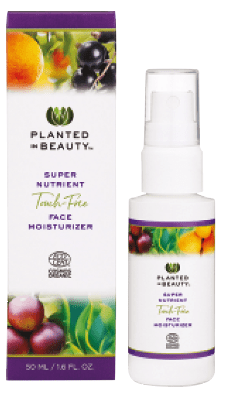
The pandemic has given rise to people having more time to contemplate what they are putting in their bodies and on their skin, as well as revisiting their health and lifestyle overall. According to Dr. Downie, her patients can be divided into two distinct groups. ‘Many of my cosmetic patients are starting to think more about their looks, their health and their lifespan. Those are the patients that “clean” is a bit more important to. Yet, other patients still smoke, still drink to excess, never get any sleep, are totally stressed and never exercise. These are the patients that do not think about their diet nor clean beauty at all. So, it depends somewhat on their personality type,’ she says.
She continues, ‘My advice to my patients is that some aspects of clean beauty are worth thinking about in terms of what we are putting on our faces and into our bodies. I explain that a clean diet and a good skin care regimen are very important for everyone. I also educate them about how preservatives are necessary in some skincare products, but too many preservatives can be an issue for some people some of the time, and we just quite frankly do not know who those people are in advance.’
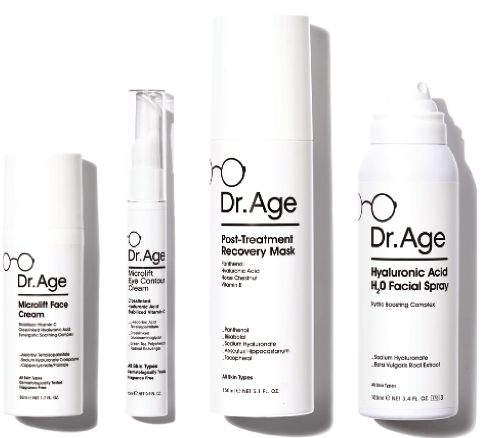
There are also instances, Dr. Downie concludes, where having superior standards would be a definite step up in terms of safety and overrides any dismissive claims about the ‘clean’ product label just being a marketing gimmick. ‘One example of an adulterated product would be how some talc but not all talc can be adulterated with asbestos which caused significant problems as asbestos is considered carcinogenic if inhaled. This led to an onslaught of cancer lawsuits. If clean beauty standards had been followed in these cases, then the talc would have been mined properly and purified. This standard, if adhered to, would have caused less human tragedy in the form of cancer and death.’
Dr. Downie calls out some brands that are doing it right. ‘I like the fact that Aveeno, Neutrogena, SkinMedica, Obagi, Colorescience and Sente try to limit the amount of extra ingredients in their products so that there are no unnecessary ingredients that can add to skin irritation. However, I do not feel that you can have truly clean beauty sunblocks at all because some chemicals are necessary for complete photoprotection and in anti-infrared protection as well. Shea Moisture Moringa and Avocado Power Greens, Uhai Oil blend Conditioner, Adwoa Beauty Baomint Moisturizing Curl Defining Gel, and ilia Super Serum Skin Tint are other examples of clean beauty products that are taking this seriously.’
The future of clean formulations
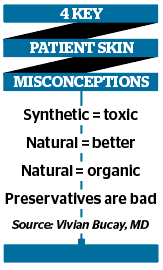
According to a survey from Influenster, consumer demand for clean beauty is on the rise and is expected to generate nearly $25 billion USD by 2025. However, how consumers define ‘clean’ and how knowledgeable they are on ingredients still varies considerably. Since debuting its ‘Clean at Sephora’ seal in 2018, Sephora has been at the forefront of the trend to make clean beauty a household word. For example, ‘Clean at Sephora’ products are formulated without a list of over 50 ingredients, including ‘sulfates (SLS and SLES), parabens, phthalates, mineral oils formaldehyde and more.’ They started off with skincare and the category has blossomed over the past four years, despite the pandemic. When I recently searched the ‘clean beauty’ category on the US site, 1,080 products popped up across four sub-categories: skincare, haircare, makeup and fragrance.
Although this trend may have started out as more hype than science, the clean moniker has woven its way into the vernacular of personal care products and is not fading away in the near future. According to Dr. Downie, ‘I do believe that the clean beauty trend is here to stay, although some clean beauty is full of gimmicks and not real in my opinion. I do think the aesthetics industry should pay attention to the consumer mindset on this topic. Finally, clean beauty is also an economic issue because many people cannot afford higher priced products for their skin, hair or nails that are clean, and therefore have to choose lower-priced products.’
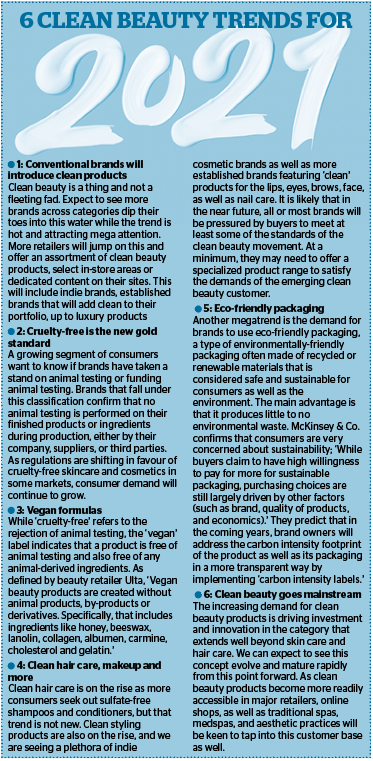
Dr. Bucay agrees. ‘Clean beauty is a trend that is here to stay and opens the door to an opportunity to educate our patients on skin care and to dispel the myths and misconceptions that abound. Although it is primarily a marketing tool, it can also serve to make us think about what we are putting on our skin and how those products are getting to market. As I see it, patients have access to a lot of information but may not have the educational background to contextualise its meaning. Being open to clean beauty and learning more about this topic affords us an opportunity to empower our patients with the knowledge needed to make smart choices about products that work with their skin care needs,’ she says. It also serves to help keep your patients out of trouble from using the wrong ingredients.
Over the next few years, we can expect to see more clean beauty products, brands, and retailers working diligently to make consumers’ lives better and satisfy their demands, which is why aesthetic clinics and medspas need to keep up with this emerging trend. In the near future, we can expect to be facing new standards and guidelines for the clean category to attempt to decipher it for both brands and consumers. Watch this space.
Resources: DefenAge — defenage.com
Skinmedica — skinmedica.com
Immunocologie — immunocologie.com
Planted in Beauty — wellwithinbeauty.com
Dr. Age — doctor-age.com
Colorescience — colorescience.com
References
- Beauty Business Journal. What Growth Can We Expect From The Clean Beauty Boom In 2021?. Available at: https://beautybusinessjournal.com/what-growth-can-we-expect-from-the-clean-beauty-boom/ [last accessed 7 April 2021]
- Good Face Project. Top 17 Clean Beauty Questions Answered. available at: https://thegoodfaceproject.com/articles/your_clean_beauty_questions_answered [last accessed 7 April 2021]
- SkinSAFE Products Inc. Available at: https://www.skinsafeproducts.com/skin-care [last accessed 7 April 2021]
- Kline & Company. The effects of the pandemic on professional skin care. Available at: https://klinegroup.com/articles/the-effects-of-the-pandemic-on-professional-skin-care/ [last accessed 7 April 2021]
- Klarna. Fresh faces & full carts. Available at: https://www.klarna.com/us/business/fresh-faces-full-carts-report-download/?utm_source=CEW&utm_medium=Newsletter&utm_campaign=Fresh%20Faces%20and%20Full%20Carts [last accessed 7 April 2021]
- McKinsey & Company. Sustainability in packaging: Investable themes. Available at: https://www.mckinsey.com/industries/paper-forest-products-and-packaging/our-insights/sustainability-in-packaging-investable-themes [last accessed 7 April 2021]
- Glossy. Sephora accelerates clean makeup push. Priya Rao. Available at: https://www.glossy.co/beauty/sephora-accelerates-clean-makeup-push [last accessed 7 April 2021]
- Mintel. Sustainable skincare in 2021 and beyond. Alex Fisher. Available at: https://www.mintel.com/blog/beauty-market-news/sustainable-skincare-in-2021-and-beyond [last accessed 7 April 2021]



